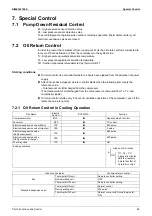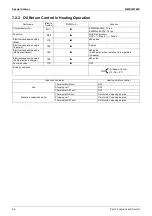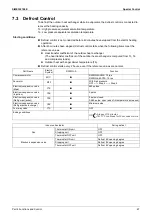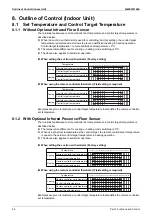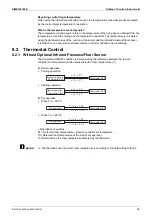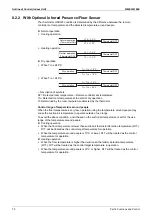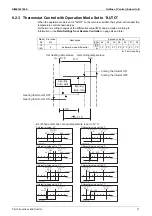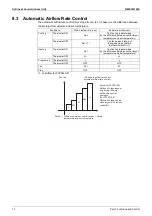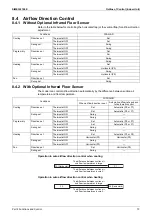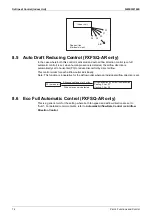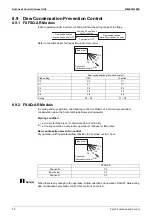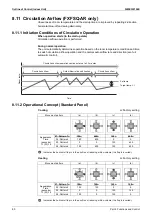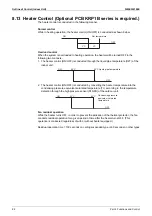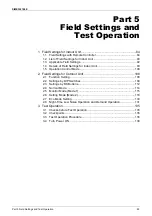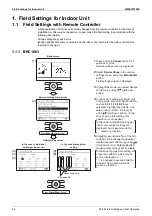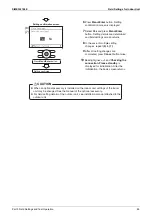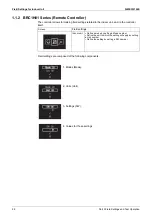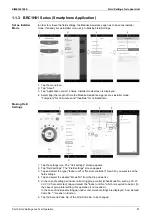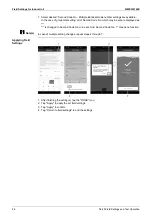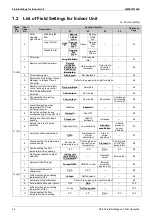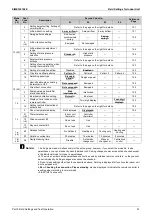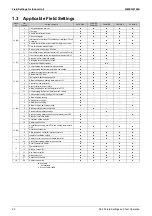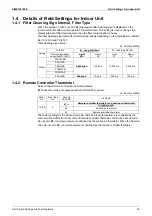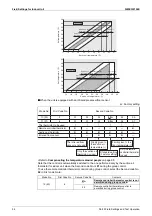
SiME332106E
Outline of Control (Indoor Unit)
Part 4 Functions and Control
79
8.10 Electronic Expansion Valve Control
Electronic expansion valves in indoor units have the functions of conducting superheating
degree control in cooling operation and subcooling degree control in heating operation.
However, if the indoor units receive any control command such as a protection control
command or a special control command from the outdoor unit, the units will give a priority to the
control command.
Superheating degree control in cooling operation
This function is used to adjust the opening of the electronic expansion valve so that
superheating degree (SH), which is calculated from the detection temperature (Tg) of the gas
pipe thermistor (R3T) and the detection temperature (Tl) of the liquid temperature thermistor
(R2T) of the indoor unit, will come close to a target superheating degree (SHS).
At that time, correction to the superheating degree is made according to the differences (
T)
between set temperature and suction air temperature.
SH = Tg – Tl
Where,
SH: Evaporator outlet superheating degree (°C)
Tg: Indoor unit gas pipe temperature (R3T)
Tl: Indoor unit liquid pipe temperature (R2T)
SHS (Target superheating degree)
Normally 5°C.
As
T (Remote controller set temp. – Suction air temp.) becomes larger, SHS becomes
lower.
As
T (Remote controller set temp. – Suction air temp.) becomes lower, SHS becomes
larger.
Subcooling degree control in heating operation
This function is used to adjust the opening of the electronic expansion valve so that the high
pressure equivalent saturated temperature (Tc), which is converted from the detected pressure
of the high pressure sensor in the outdoor unit, and the subcooling degree (SC), which is
calculated from the detected temperature (Tl) of the liquid temperature thermistor (R2T) in the
indoor unit, will come close to the target subcooling degree (SCS).
At that time, corrections to the subcooling degree are made according to differences (
T)
between set temperature and suction air temperatures.
SC = Tc – Tl
Where,
SC: Condenser outlet subcooling degree (°C)
Tc: High pressure equivalent saturated temperature detected by the high pressure sensor
(S1NPH)
Tl: Indoor unit liquid pipe temperature (R2T)
SCS (Target subcooling degree)
Normally 5°C.
As
T (Remote controller set temp. – Suction air temp.) becomes larger, SCS becomes
lower.
As
T (Remote controller set temp. – Suction air temp.) becomes lower, SCS becomes
larger.

